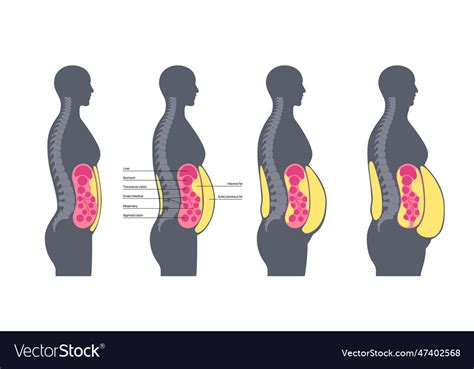Hormonal Blueprint: The Key to Male Fat Distribution
The human body stores fat in various depots, and the distribution of this fat is far from random. It’s a complex process heavily influenced by biological factors, with sex hormones playing the most significant role in dictating the characteristic ‘apple’ shape (android or abdominal adiposity) often observed in men, even when their overall body fat percentage isn’t excessively high. This contrasts sharply with the ‘pear’ shape (gynoid or gluteofemoral adiposity) more commonly seen in women.
The Dominance of Testosterone
The primary biological reason for this disparity lies in the predominant sex hormones. In men, testosterone, the primary male sex hormone, plays a crucial role in promoting the accumulation of visceral fat. Visceral fat is the metabolically active fat stored deep within the abdominal cavity, surrounding organs like the liver, pancreas, and intestines. Testosterone encourages the differentiation of fat cells (adipocytes) in the abdominal region and influences their metabolic activity, making them more prone to storing energy.
Conversely, estrogen, the primary female sex hormone (though present in smaller amounts in men), is largely responsible for encouraging fat deposition in the gluteofemoral (hips and thighs) region in women. Since men have significantly lower levels of estrogen and higher levels of testosterone, their bodies are biologically predisposed to favor abdominal fat storage over fat storage in the lower body.

Androgen Receptors and Fat Cell Activity
Beyond simply influencing where fat cells develop, sex hormones also dictate how these fat cells behave. Fat cells in different body regions have varying densities of hormone receptors. Abdominal fat cells, particularly visceral adipocytes, possess a higher concentration of androgen receptors (which respond to testosterone) compared to fat cells in the hips and thighs. When testosterone binds to these receptors, it promotes fat accumulation and reduces fat breakdown in the abdominal area.
Furthermore, visceral fat is more readily mobilized for energy compared to subcutaneous fat (fat just under the skin) and gluteofemoral fat. While this might seem beneficial, it also means visceral fat is more metabolically active, releasing free fatty acids, inflammatory cytokines, and other substances that can negatively impact metabolic health.
Metabolic Differences and Health Implications
The ‘apple’ shape is not just an aesthetic concern; it carries significant health implications. Visceral fat is strongly linked to an increased risk of various metabolic disorders, including insulin resistance, type 2 diabetes, cardiovascular disease, and certain cancers. Its high metabolic activity and proximity to vital organs mean it can directly interfere with their function and contribute to systemic inflammation.

Genetic Predisposition and Lifestyle Factors
While hormones are the primary biological drivers, genetics also play a significant role in determining an individual’s predisposition to store fat in specific areas. Some men may be genetically wired to accumulate more abdominal fat than others, irrespective of their hormonal profile. Lifestyle factors such as diet, exercise, stress levels, and sleep quality also profoundly impact overall fat accumulation and, to some extent, its distribution, although they typically amplify or mitigate the underlying hormonal tendencies rather than override them.
The Evolutionary Perspective
From an evolutionary standpoint, the different fat distribution patterns might have offered advantages for reproductive success or survival. Abdominal fat, being more readily accessible for energy, could have served as a quick energy reserve for hunting or fighting. In women, gluteofemoral fat stores are crucial for supporting pregnancy and lactation, providing a stable, long-term energy reserve for offspring development.

Conclusion
In essence, the ‘apple’ shape observed in men is a direct consequence of their distinct hormonal milieu, primarily the dominant influence of testosterone on visceral fat accumulation and the specific distribution of androgen receptors on fat cells in the abdominal region. While genetics and lifestyle factors also play a part, it is this fundamental biological predisposition that defines the male pattern of fat storage, making abdominal adiposity a more common and often concerning feature of male body composition.





